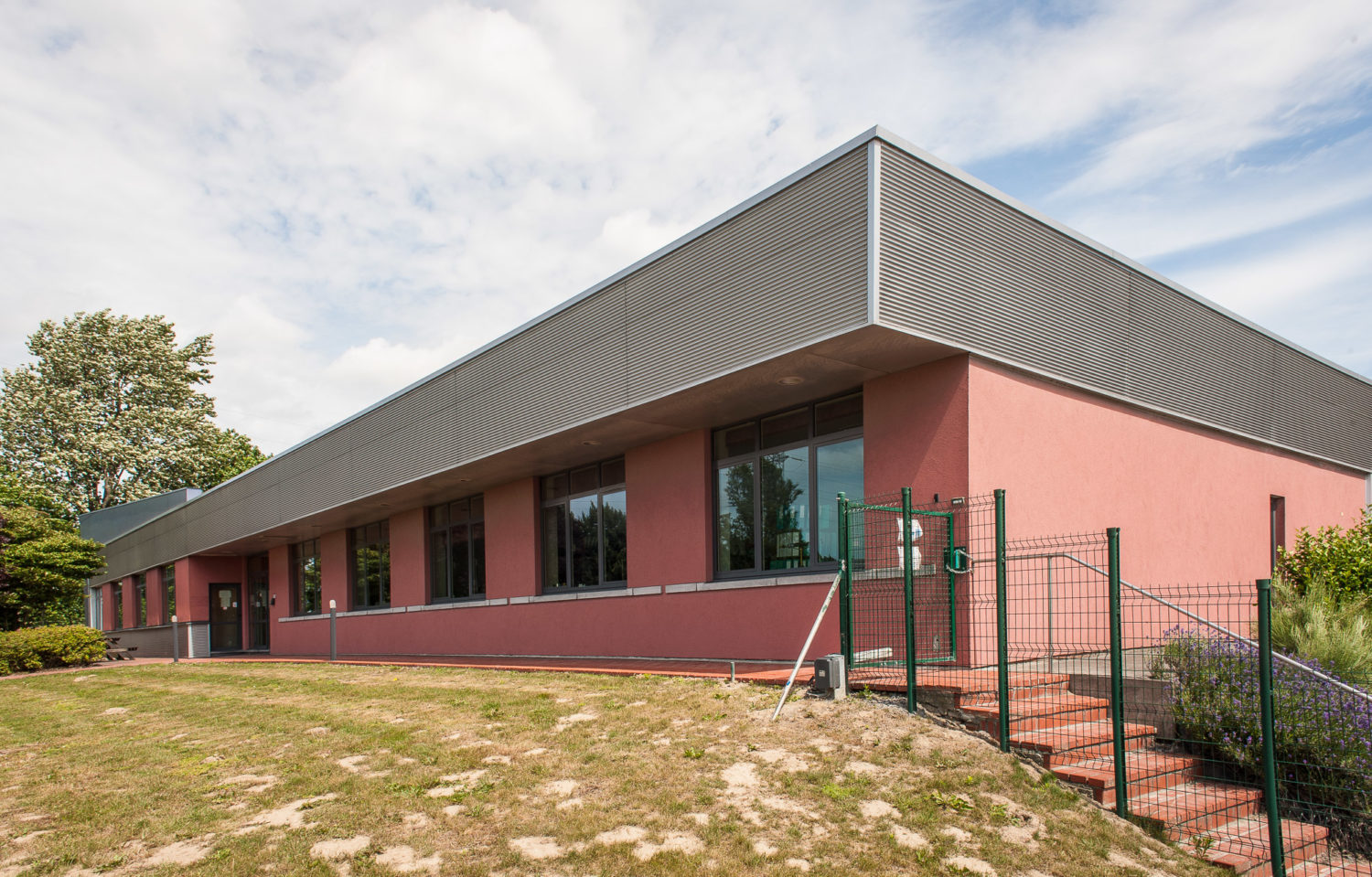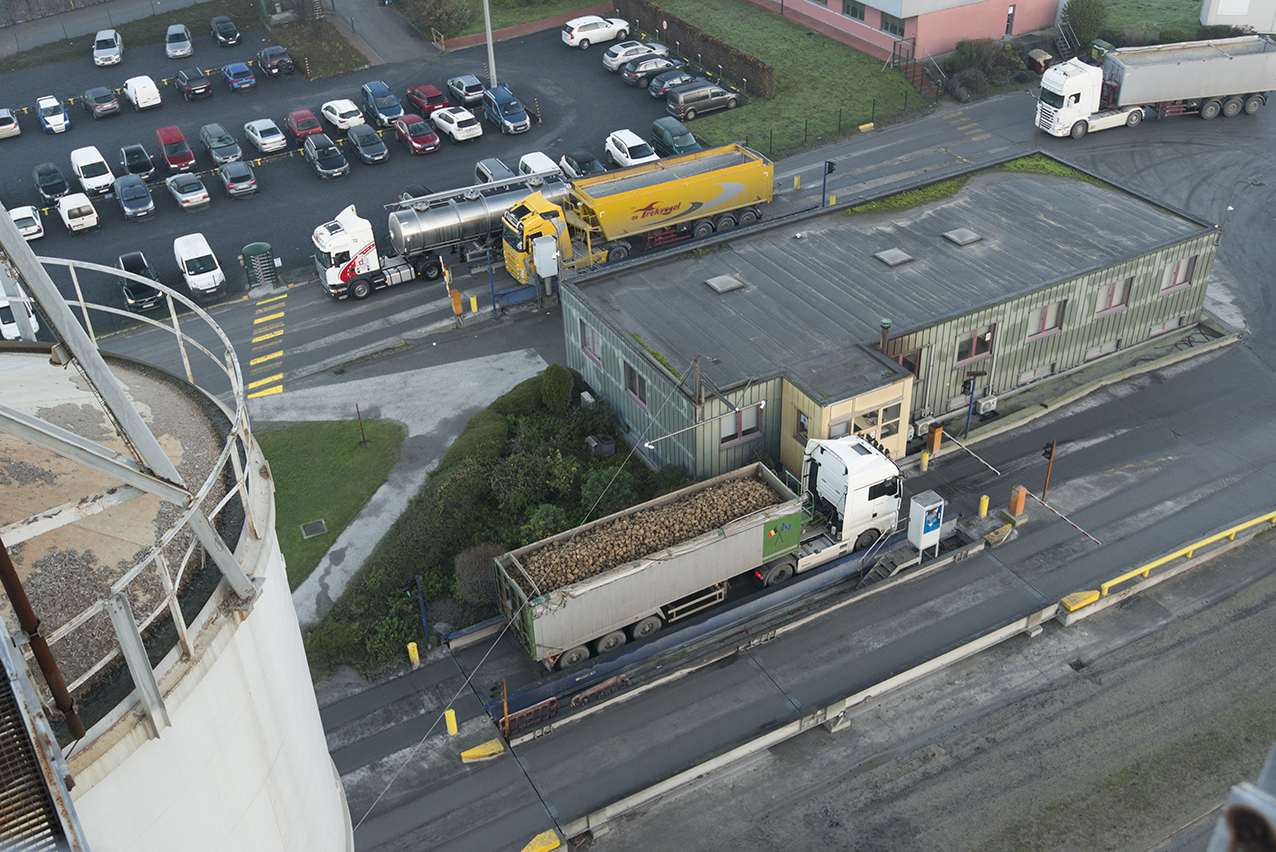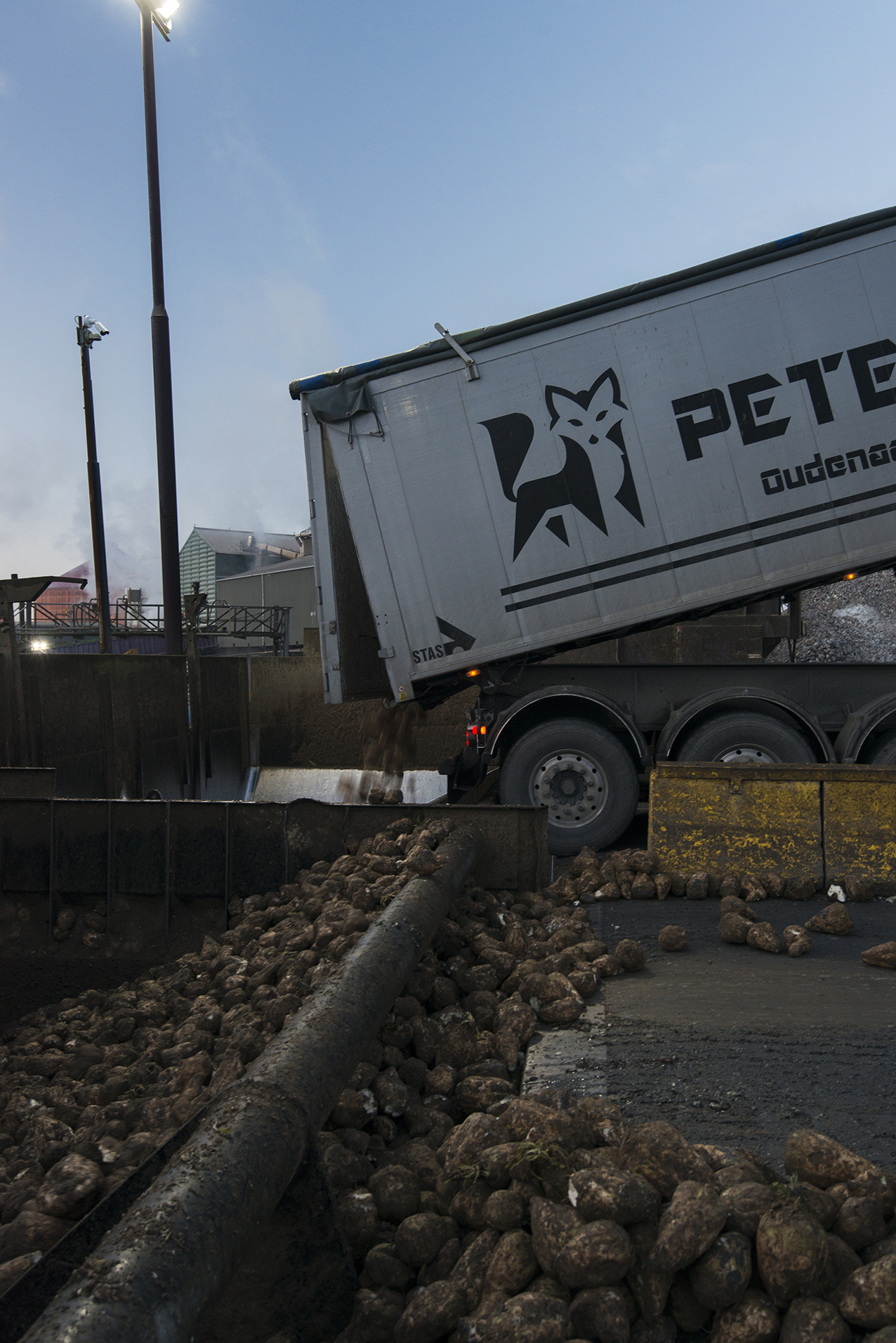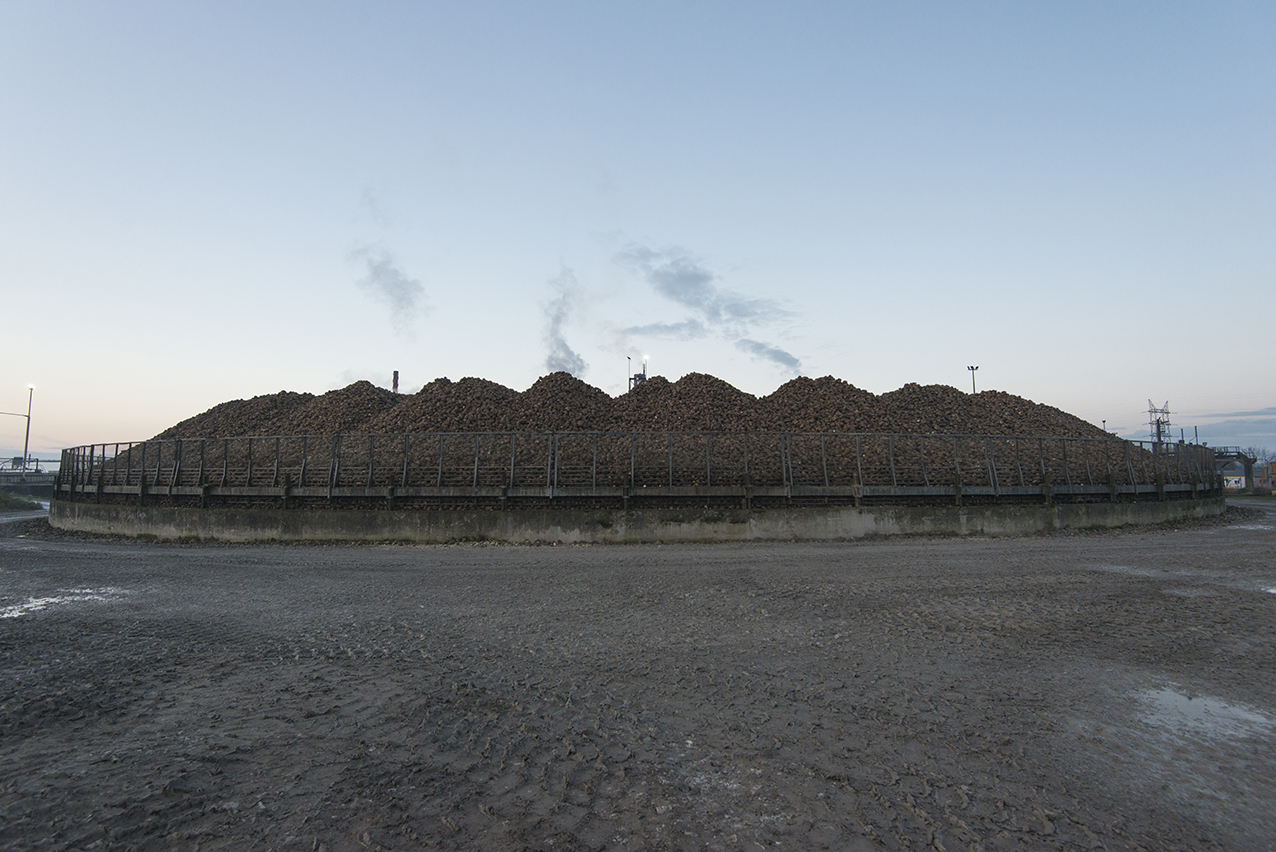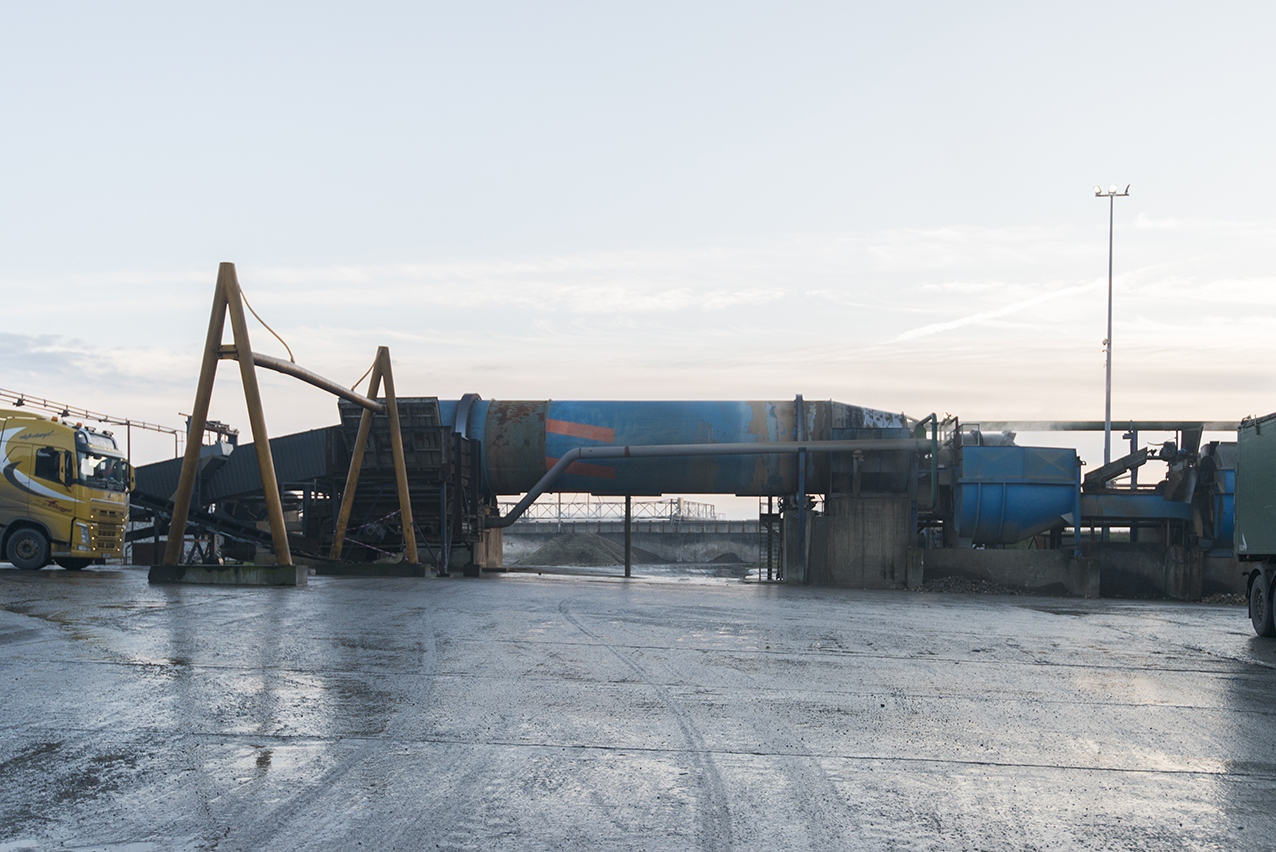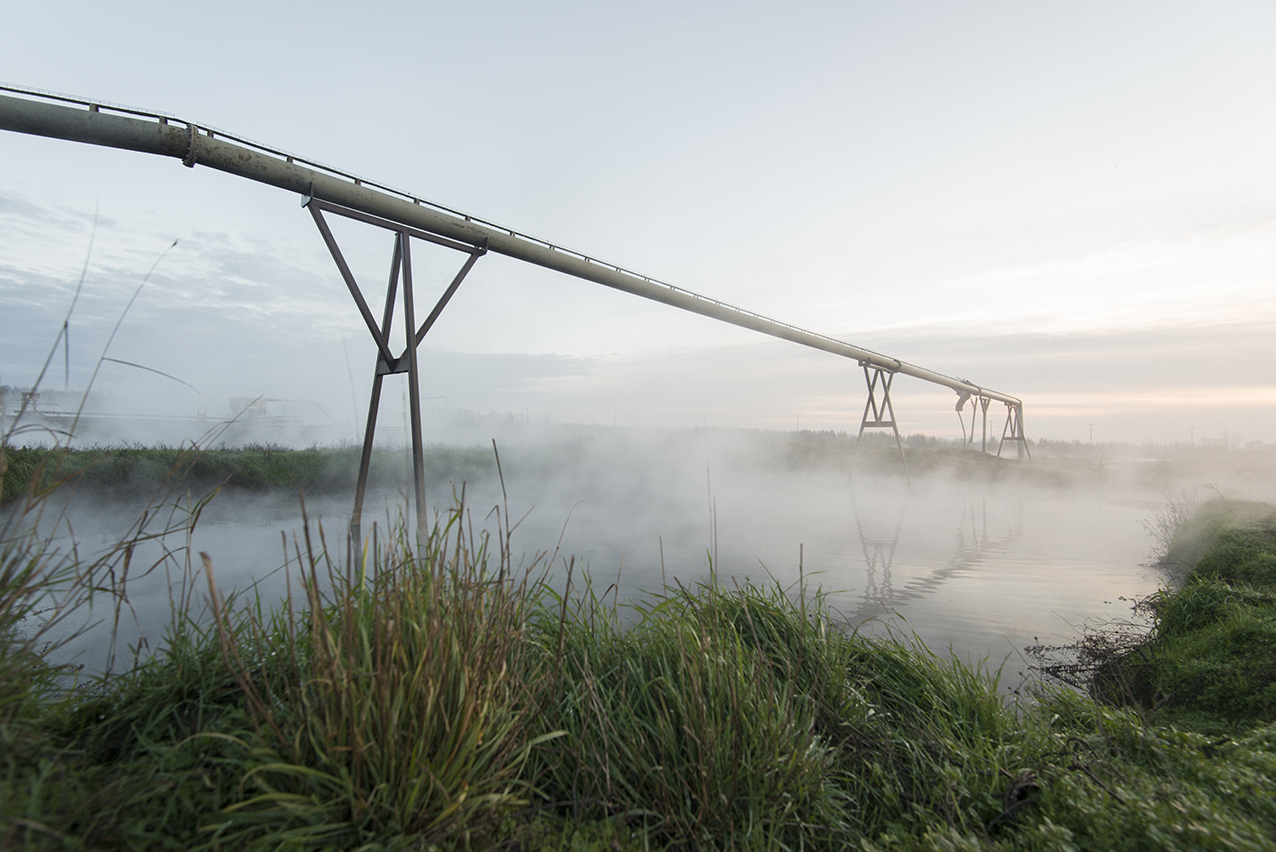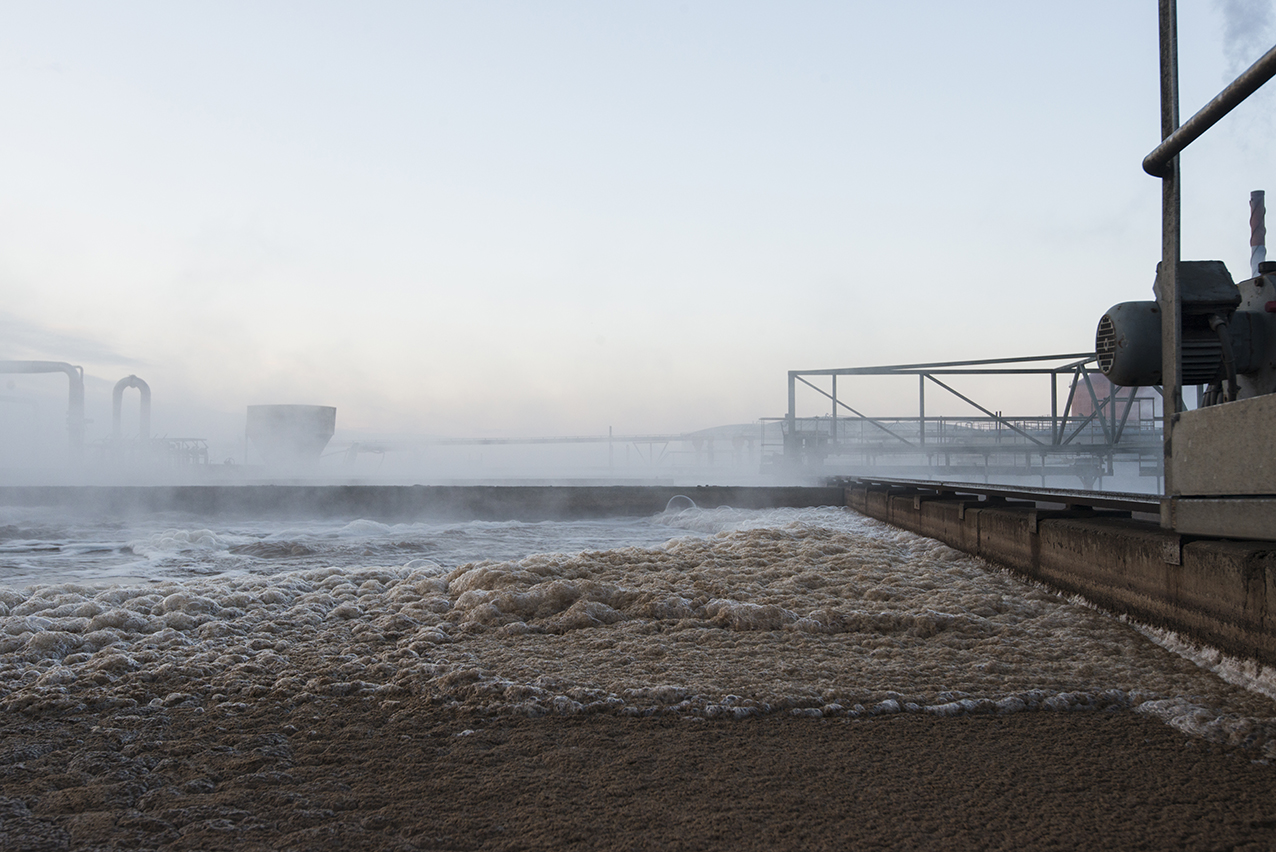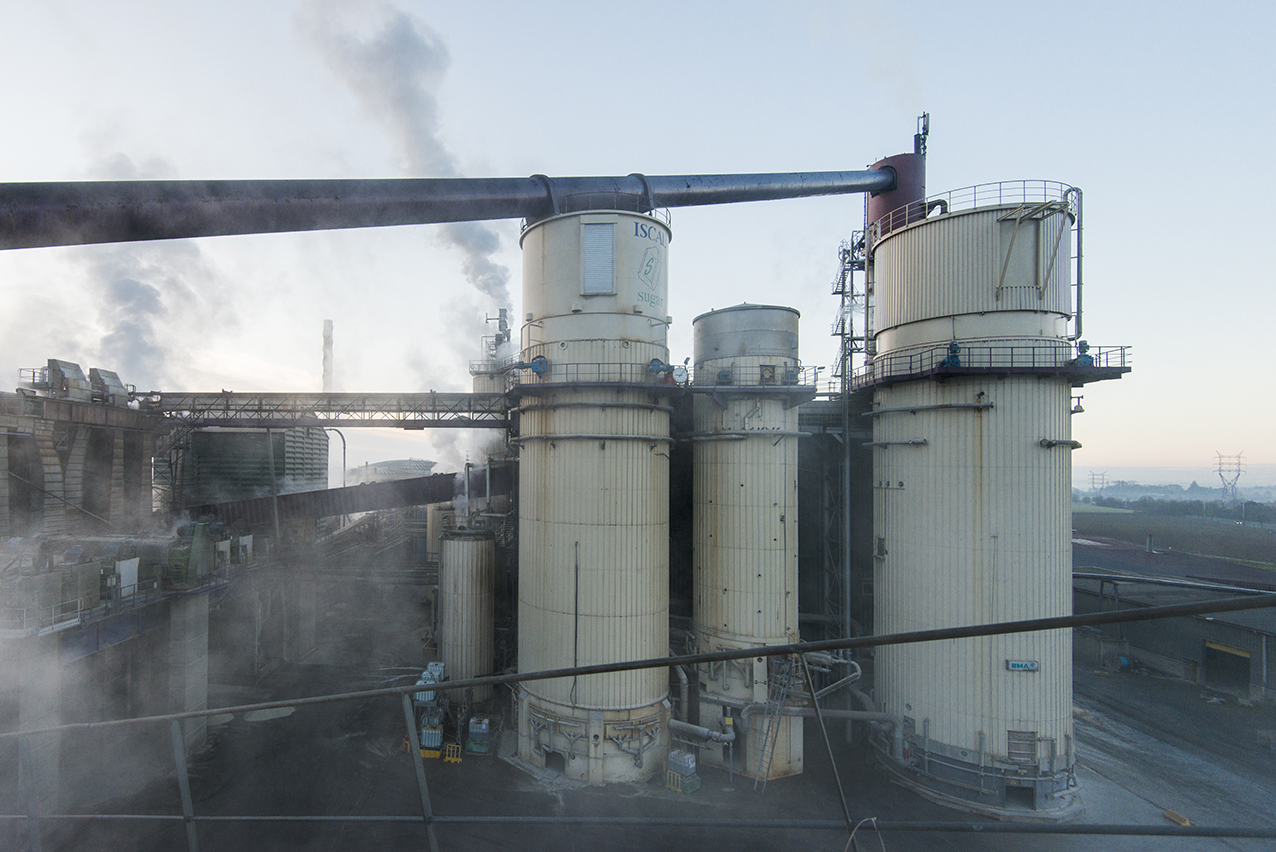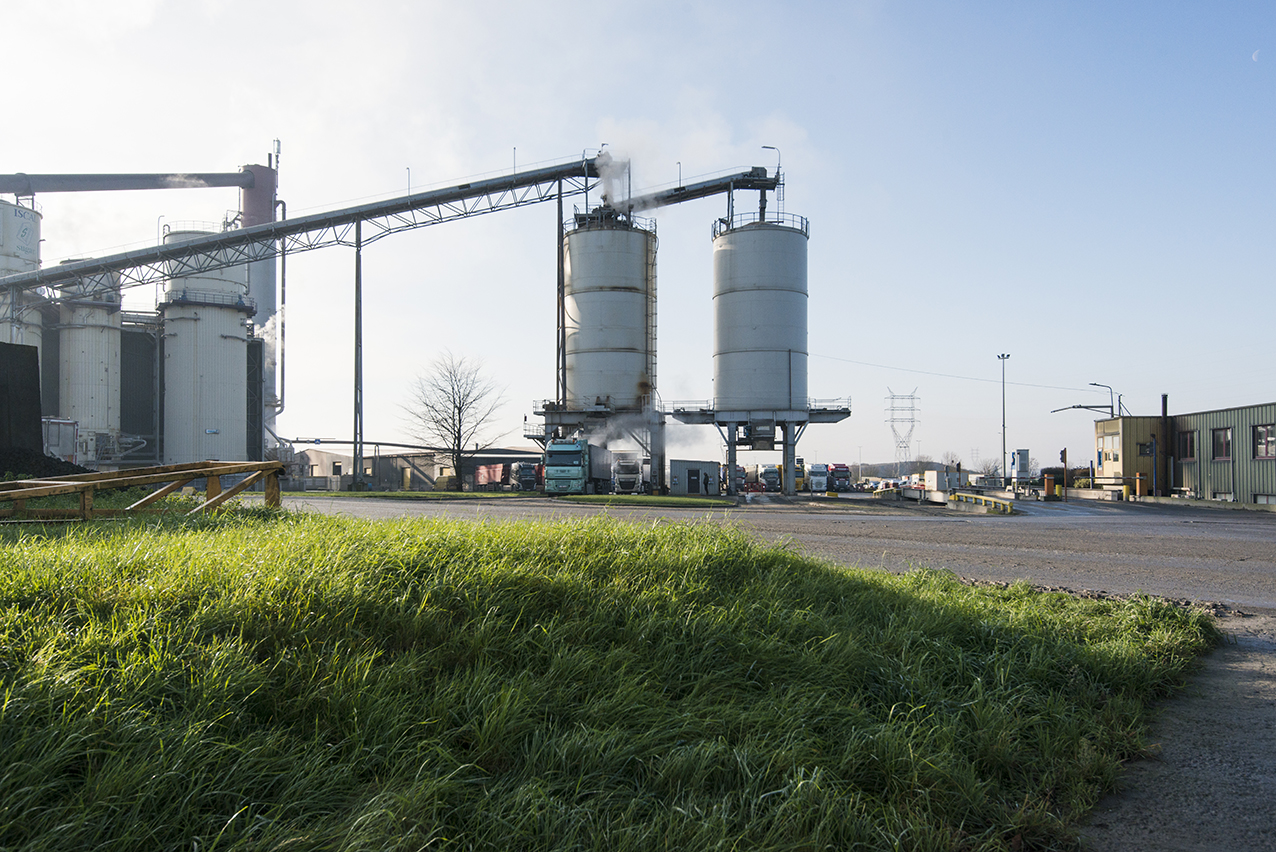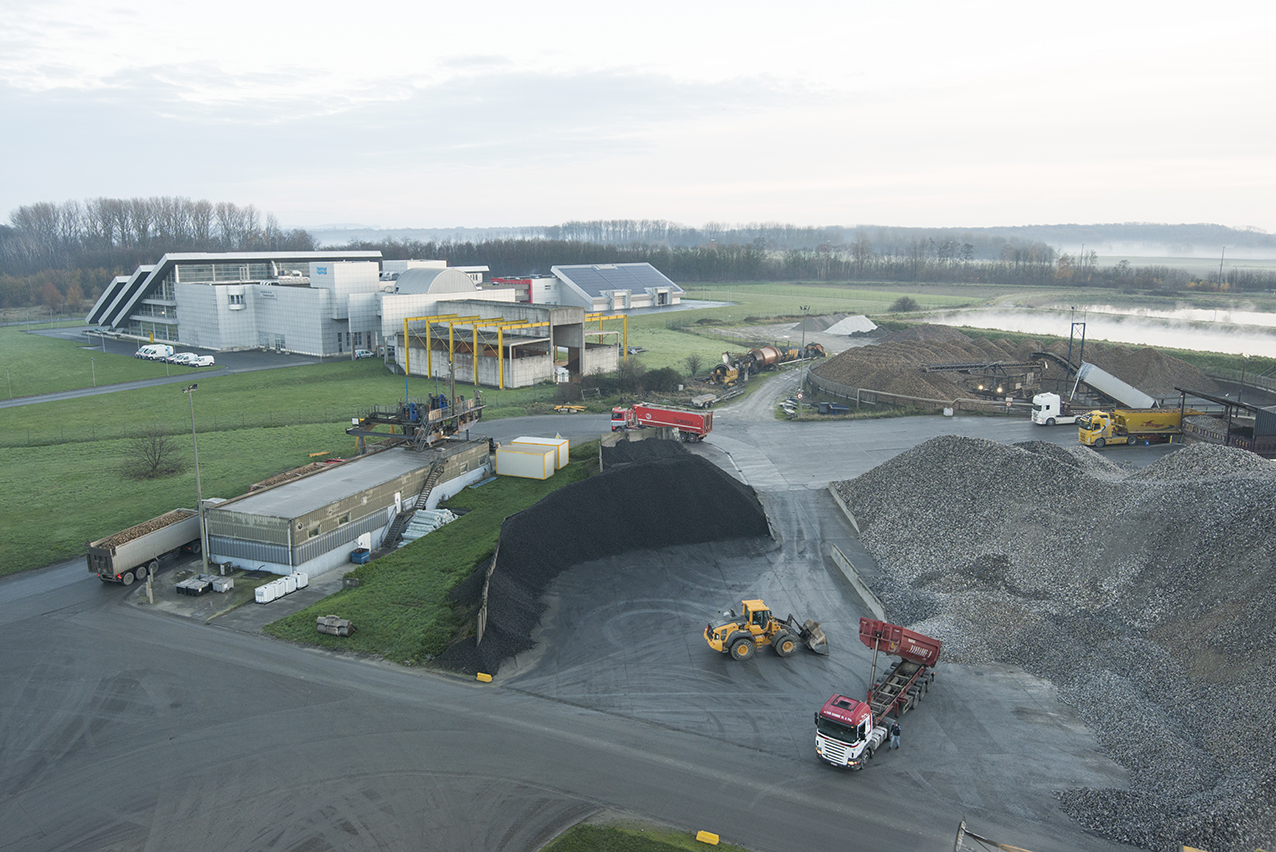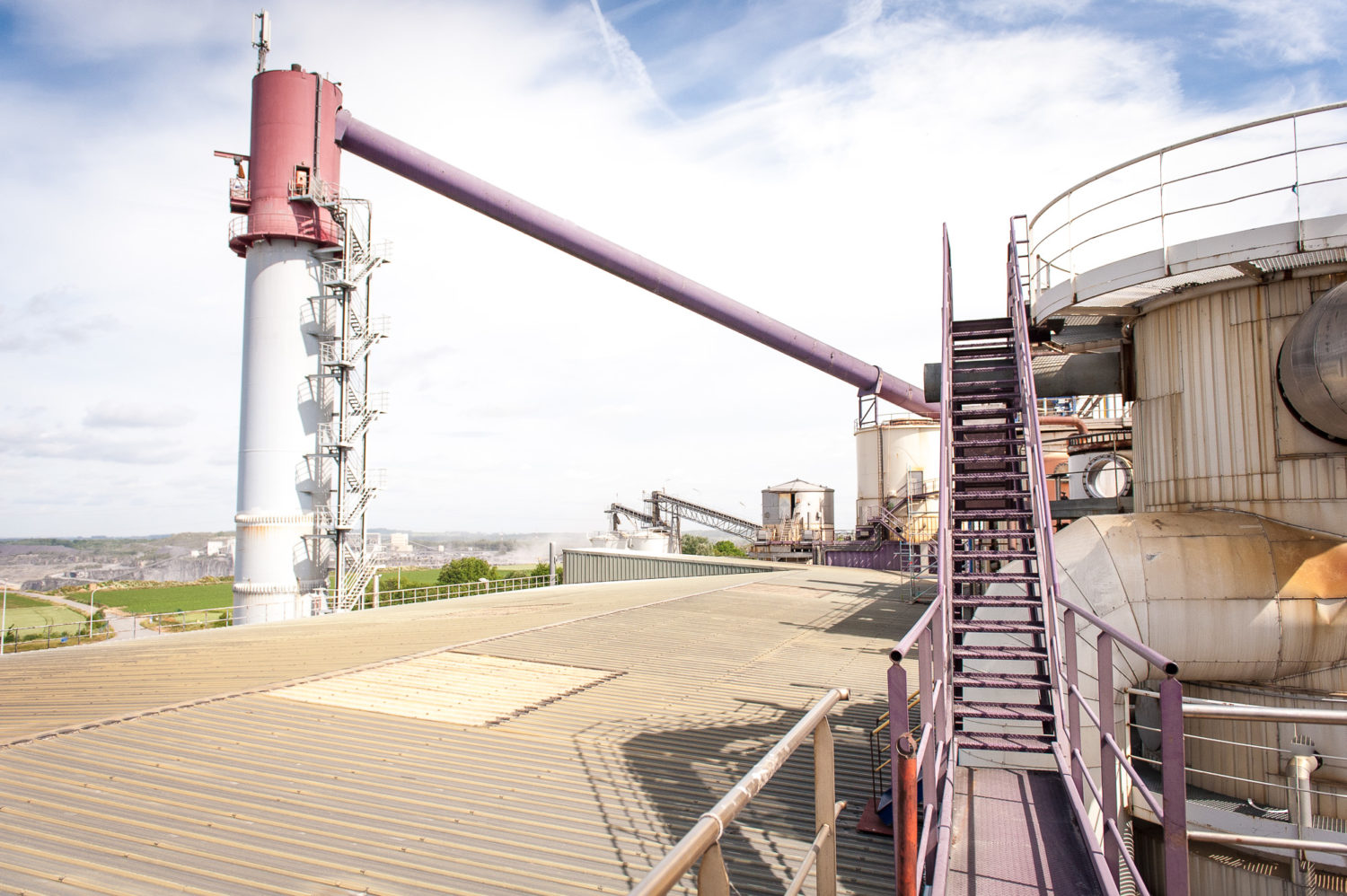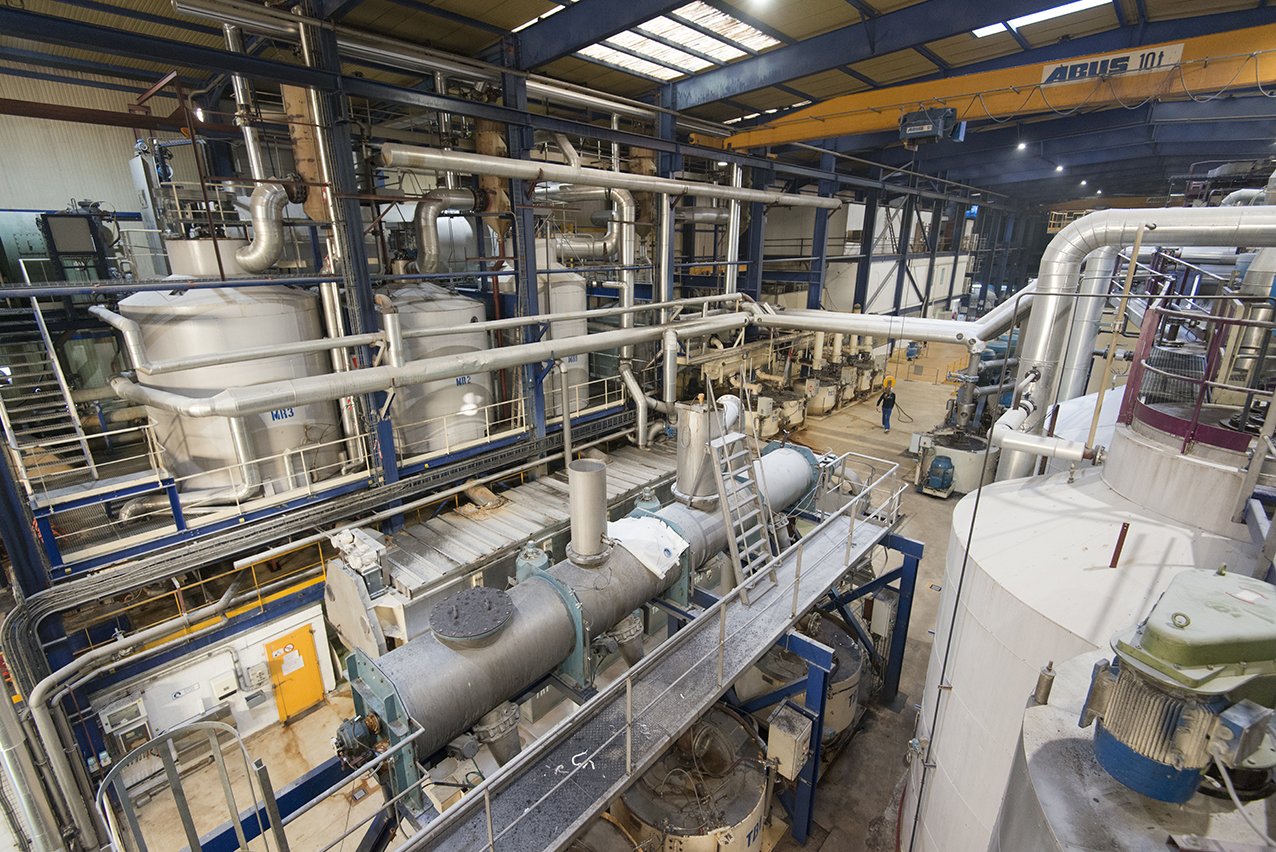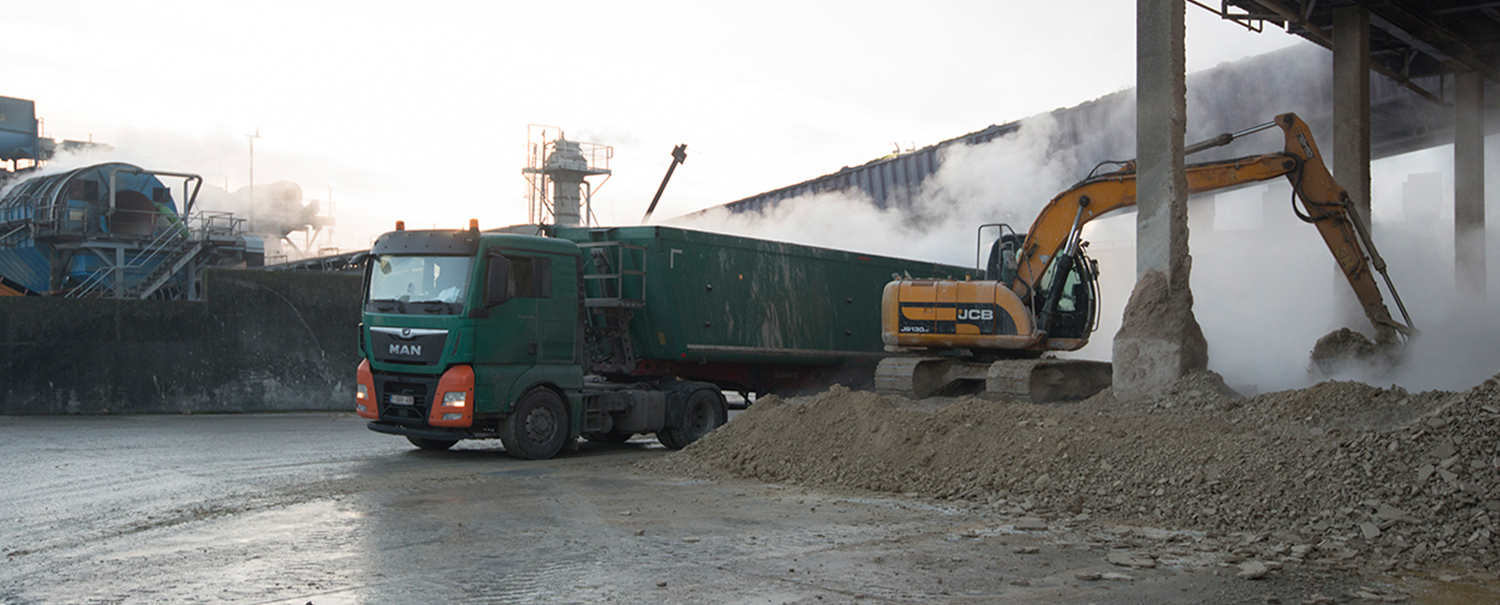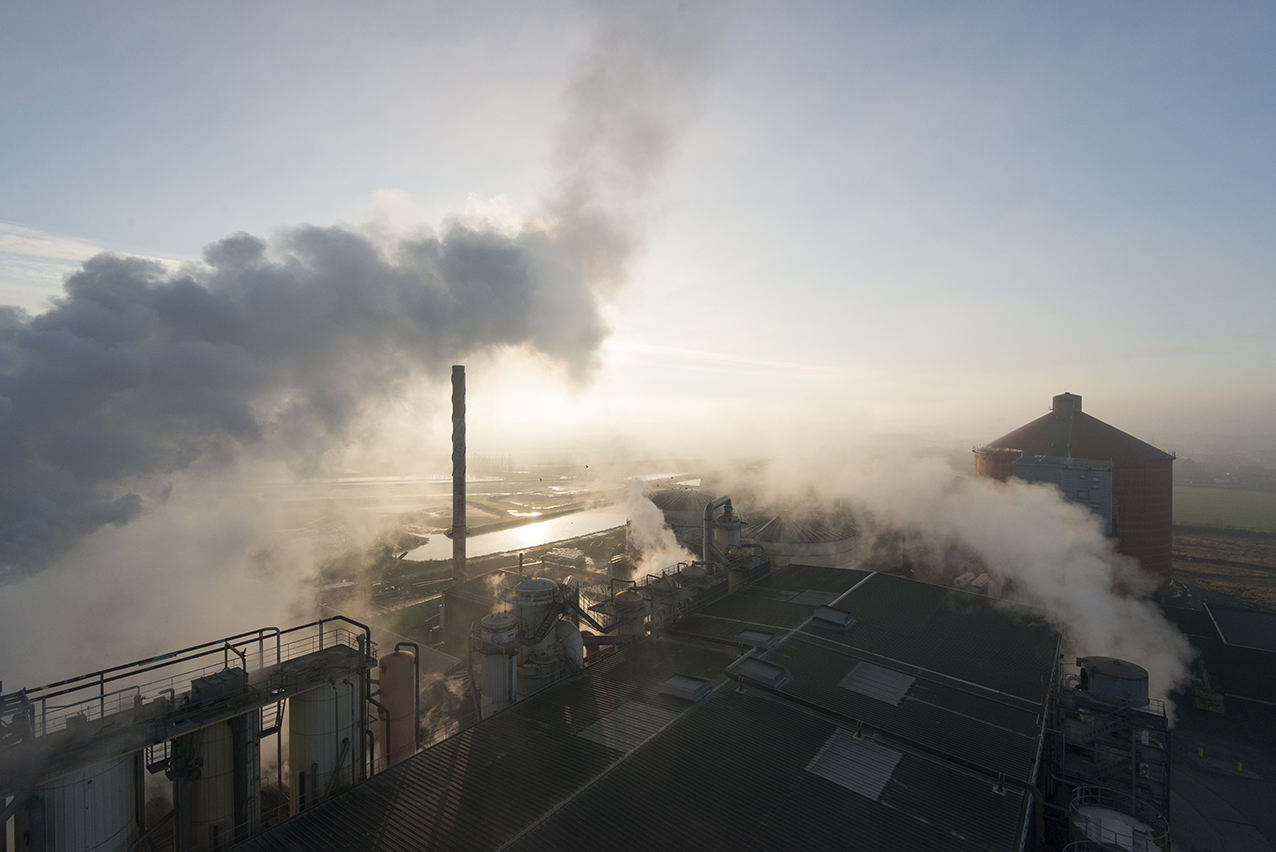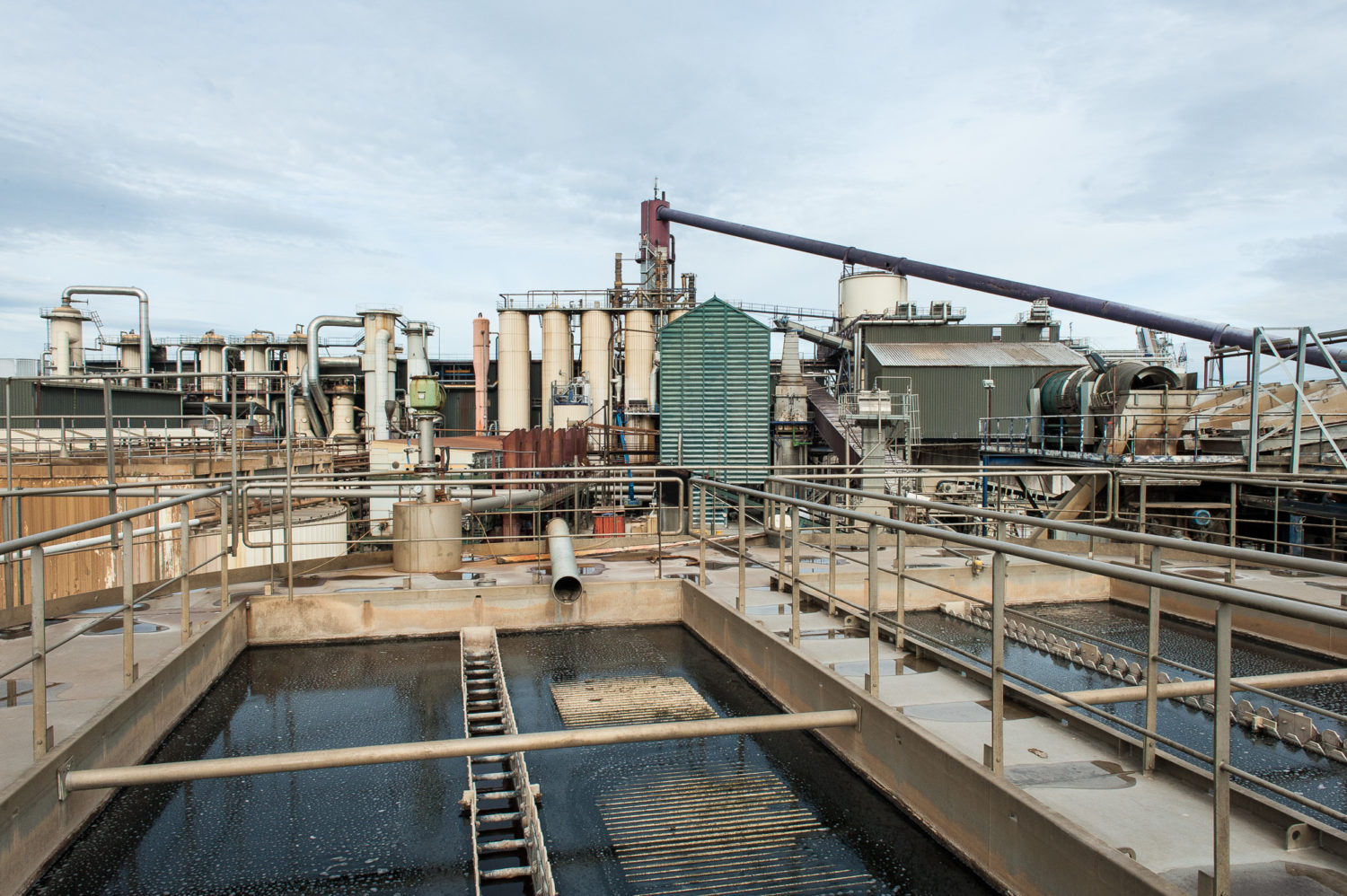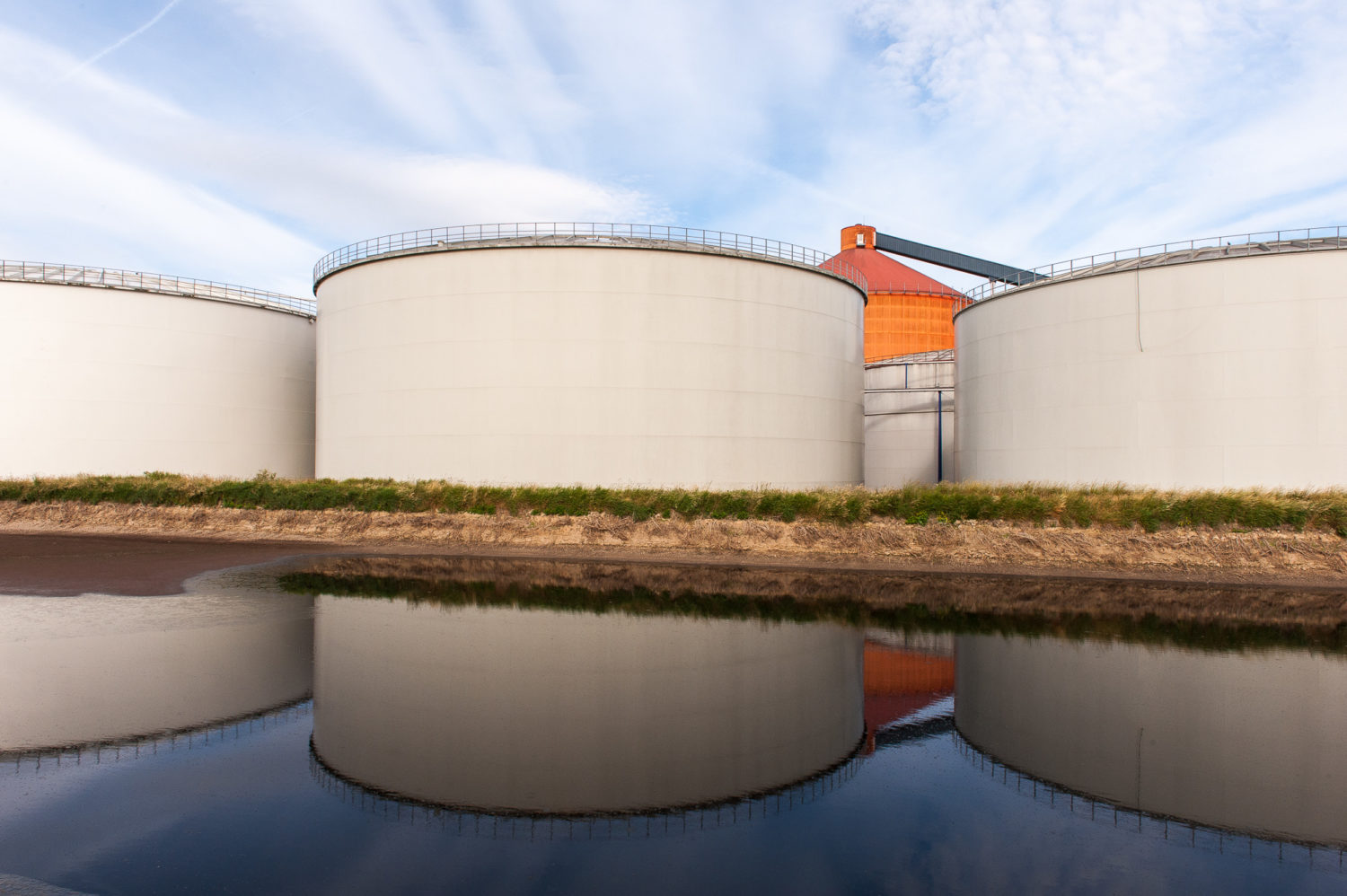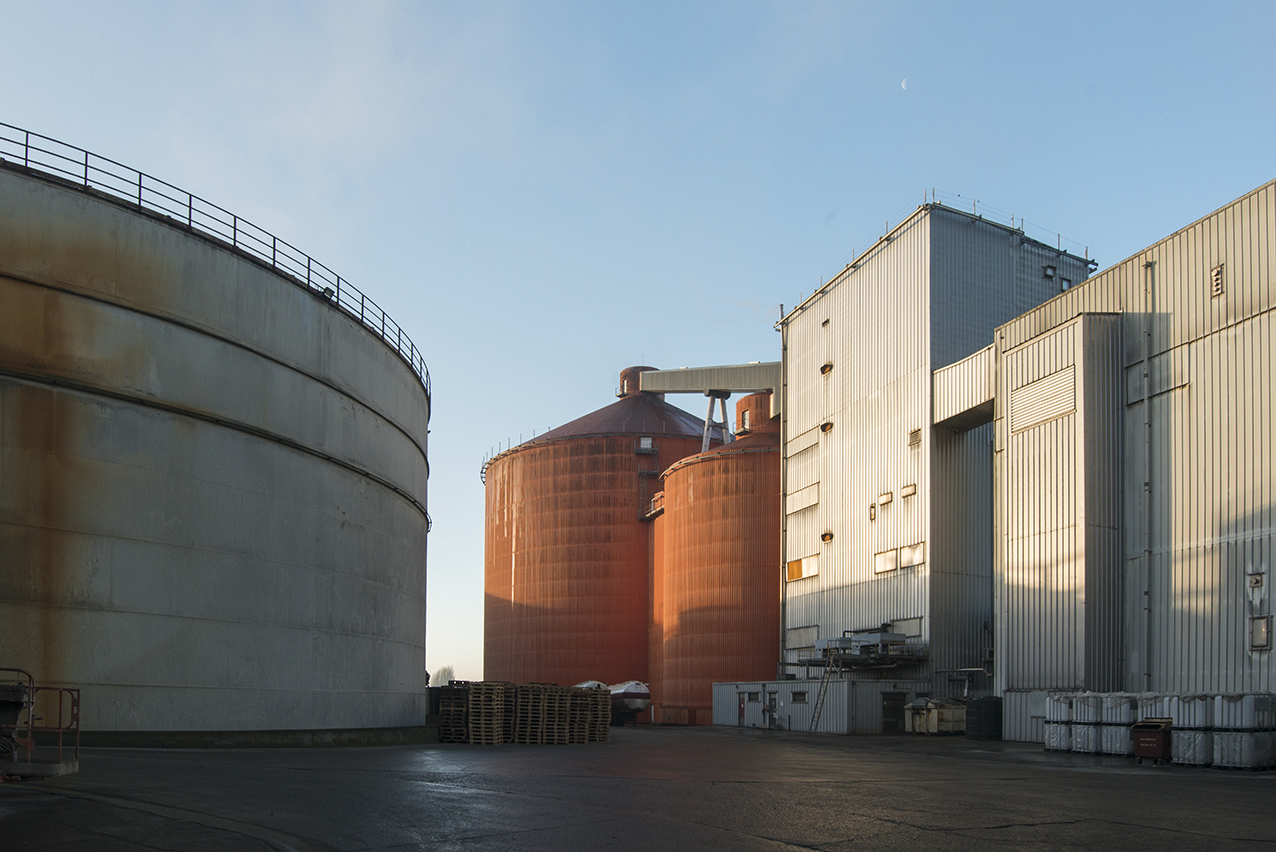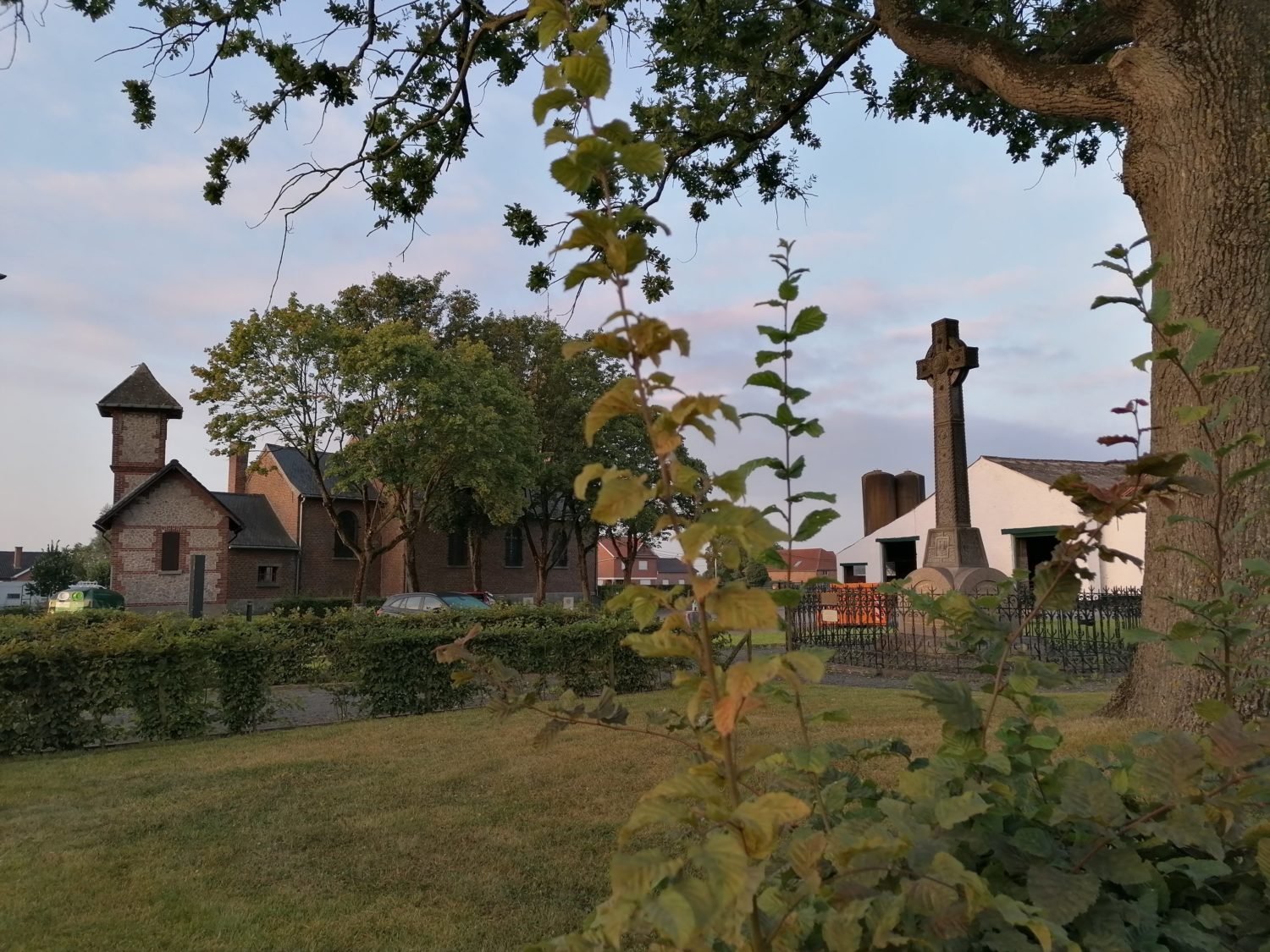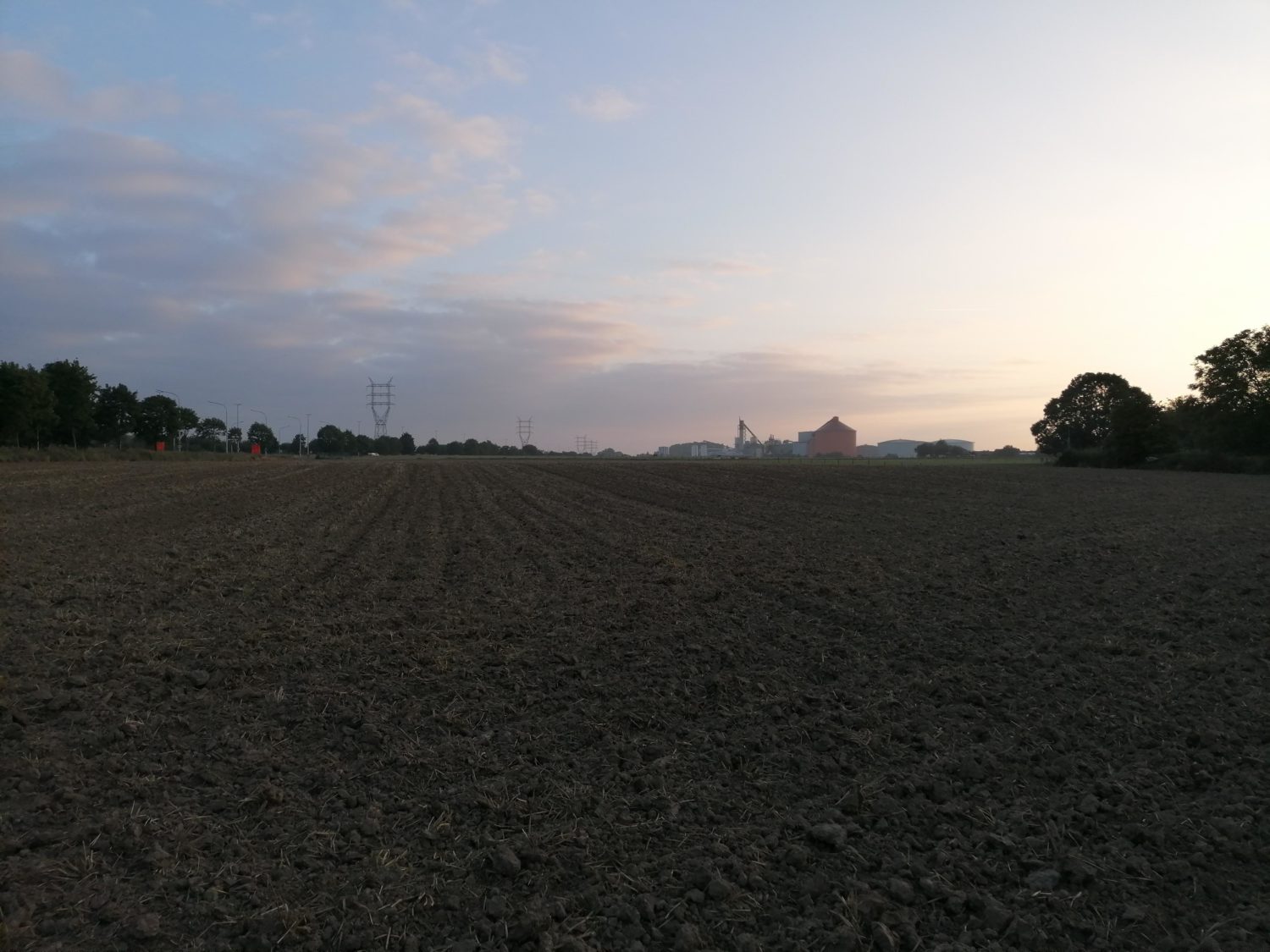Virtual tour
1
Administrative building
Tiny compared with the factory, it houses a team of 20 administrative employees who are essential to the operations of the Iscal Group.
The parking is located just in front of it and is used by all employees. It is also the starting point of the guided tours.
2
Weighing – agronomic building
Every incoming or outgoing transport comes alongside this building and passes over three sets of scales. That is how we determine precisely the weight of each load coming into or exiting the site.
Inside the building is the agronomic team, in contact with no less than 2’500 farmers in the Yser and Scheld valleys
3
Tare
During the campaign season, each beet carrier drives alongside this building and a core sample is taken from their truck. We collect about fifty kilos from the tens of tons they carry, and measure precisely the amount of soil residue, and the sugar content of the beets. By combining this information with the weight of the load, we can pay each farmer for the exact amount of the load they deliver.
4
Tipping platform
This platform is one of the busiest areas during the campaign season. From 4am to 11pm, a succession of trucks come to tip tens of tons of beets into four inlets. Two of them lead directly to the factory, while the two others transport the beets to the courtyard.
5
Courtyard/Beet park
This is where we store all the beets that are not directly transported to the factory. This beet park ensures we have an uninterrupted supply to the factory, using a hydraulic system (operating 24/7). In total, we are able to store 20’000 tons of beet, which is a little under two full days of production.
6
Washing
Imagine the longest succession of washing machines you have ever seen. Several tens of meters long, our washing process injects water, first cold and then warm, in large drums. This is how we wash our beets and clean them of the soil from the fields, to remove stones and other residue.
We also retrieve grass and other vegetal elements. These are collected by different partners who use them to create biogases in what we call digesters.
7
Settling basins
Because of the washing of the beets, there is a lot of mud in the water. The settling basins allow the soil to settle at the bottom of these basins. During the off-season, the soil is cured to create a circuit with the washing water.
8
Purification station
A beet contains no less than 75% of water! Over an entire campaign, all our beets represent some 900’000 m³ of water. We use this water in our process but cannot keep all of it indefinitely on our site.
As we are only a few kilometres from the Escaut, we are able to occasionally inject the water back into the river. Of course, before doing that, we ensure the water is clean by passing it through a purification station.
9
Diffusion towers
These three towers are the first thing you notice when you arrive at our site. Imagine that each tower is fitted with a gigantic worm drive. Water flows from the top, and the bottom is fed with cossettes, which are thin beet slices. As the cossettes rise, they are depleted of their sugar, which is transferred to the water.
This clear and sweet juice is collected at the base of the towers, and is sent to continue its journey through the factory.
10
Pulp silos
There are two pulp silos. They allow farmers to come and collect the pulp to feed their cattle. Our silos are fed by a long transporter that comes directly from the presses. If you have a chance, the view from the top is breath-taking… but only if you aren’t afraid of heights!
11
Lime and coke storage
Admittedly, you wouldn’t expect to find great mounds of stones when you visit a sugar refining plant. These two piles of stones are a key element of our filtration operations during our refining process.
12
Lime kiln
Nearly 60m high, this tower can be seen from afar. It is our lime kiln, where we produce kiln from lime-enriched stones and coke. In addition, we retrieve some of the CO2 produced by the combustion, to use it later in the process, when we purify our sweet juice.
13
Factory
It is only by walking up and down and along our factory that you’ll finally manage to find your way. It is four stories high and features many intermediary levels, gangways, and stairwells. When you get lost in this maze, you will start understanding the complexity of the process. Can you guess how many kilometres of cables and piping are concentrated in these few hundreds of square meters?
14
Scum
When we filter our sugar juice, we retrieve many organic elements. When lime is integrated in the process, the filtration sludge becomes very interesting for anyone who wants to stabilise the pH of a field.
We collect the sludge, dry and press it, and it turn into “scum”. It is used by our farmers who spread it over their fields when they have finished turning the earth.
15
Evaporation
It is often said that a sugar refining plant is a steam factory. Looking at the clouds of steam we create during the campaign season, it’s probably true!
But, however proud we may be of our modest contribution to the Belgian cloudy sky, we prefer to collect the hot steam to reuse it at different temperatures in various points of our process.
16
Anaerobic station
We use these anaerobic stations to produce biogases. As we explained above, we regularly collect our washing water, slightly enriched in sugar because of its contact with the beet. Billions of bacteria come and “eat” this sugar, helping us purify our basin water and producing combustible gases. Many thanks to our little anaerobic friends!
17
Syrup tanks
These six huge white tanks are used to store thousands of cubic metres of sugar syrup. Why do we keep it? Simply because we receive too many beets during the campaign. But, we still make them undergo the first stages of the process, until we obtain syrup.
The syrupy liquid is then stored till mid March, when we restart our factory operations and empty them in just two months.
18
Sugar silos
We have two silos at Fontenoy. The smaller one has a capacity of 6’000 tons, and the larger one can hold up to 40’000 tons. In September 2021, we will start the construction of a new 80’000-ton silo.
19
Fontenoy village
Located at less than one kilometre from our factory, the village of Fontenoy boasts a rich history. This village and our site were the location of the battle of Fontenoy in May 1745. Nearly 100’000 men from all over western Europe fought over these few square kilometres. The French, under Louis XV, won the battle, which marked the beginning of a two-year conquest of Holland, which was Austrian in that era.
20
Fields
There is a good reason why sugar factories are surrounded by fields. Once a beet is harvested, it progressively loses its sugar content. Historically, transport was a lot more complicated than it is today. Beets had to be quickly transported to the sugar factory, which explains their proximity to the fields.
